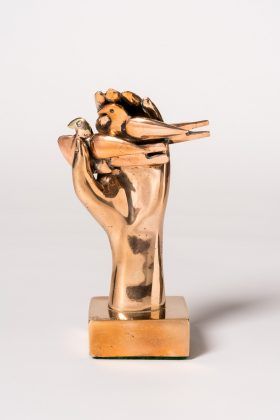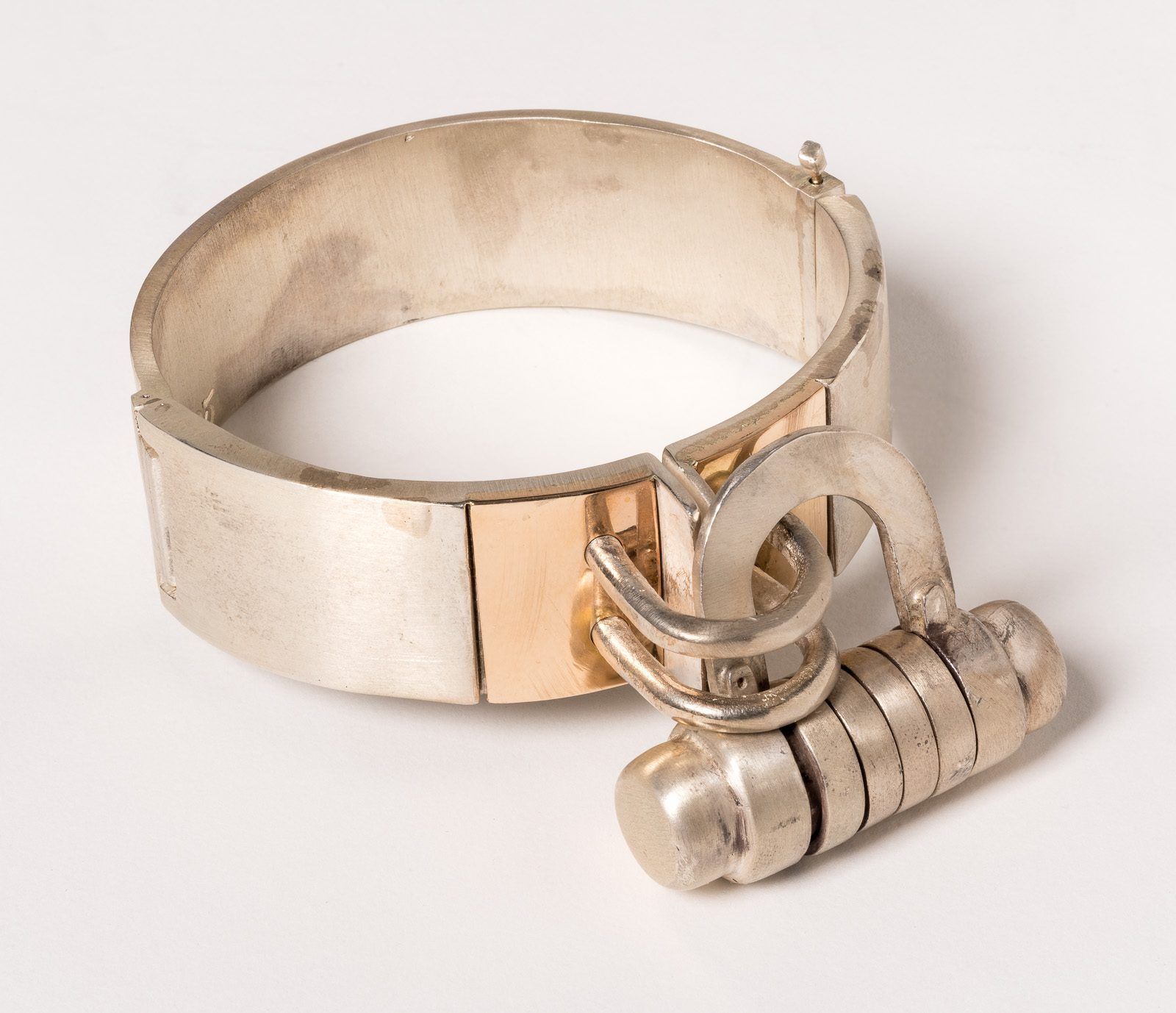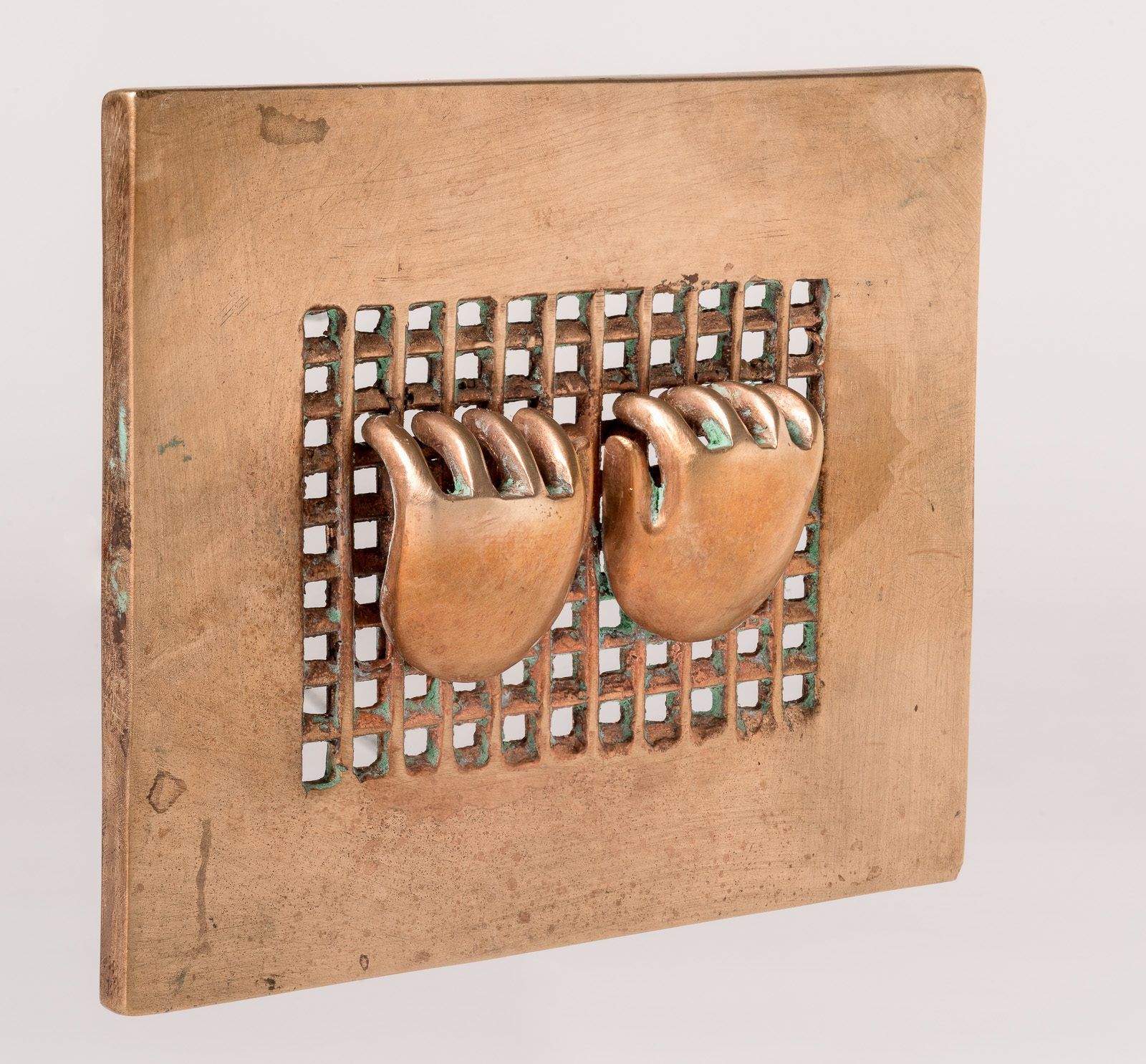By Kayhan Life
“Oh Nightingale: Parviz Tanavoli” is an exhibition currently on at the West Vancouver Art Museum that spans the six-decade career of the Iranian-Canadian artist. It focuses on his wearable art as well as on small sculptures, prints and paintings of birds, cages, and locks.
“My cages are homes of hopes,” says Tanavoli. “And I put a lot of things in the cages. It’s the opposite of what some people think: I do not consider what I put in cages imprisoned, but preserved, made safe.”
According to the Vancouver Museum, Tanavoli has “returned repeatedly” to the forms in the show. They have allowed him to “explore the themes of freedom, nothingness, poetry and history, while playing with his viewer’s awareness of traditional function and meaning.”
“Just as he subverts the accepted meaning of a cage,” the museum adds, “he explores dualisms that manifest themselves as both significant and trivial, a poet contrasting the everyday with the remarkable.”
Tanavoli is widely acknowledged as the “father of modern Iranian sculpture,” and a leading influence in a generation defined by artistic practices that are both modern and distinctly Iranian. His visual vocabulary is a fusion of Persian imagery and iconographic traditions, and modern artistic movements such as Pop Art.
Tanavoli is a founding member of the Saqqakhaneh School — a school of art that derives inspiration from Iranian folk art and culture, and that uses pre- existing elements from votive Shi’ite art to create new work. His output is perhaps best exemplified by the calligraphic figure of heech, the Persian word for nothingness, a recurring theme in his sculptural repertory.
“Heech is not nothing,” the artist explains. “It has a body, a shape, but also a meaning behind it.”
Tanavoli was born in Tehran in 1937 and graduated from the city’s Fine Arts School in 1955. After studying in Carrara, Italy for two years, he returned to Iran, where he gained critical acclaim for his sculpture exhibition at the Farhang Hall, the first of its kind in Iran.
In 1960, he helped establish the curriculum for the newly created College of Decorative Arts, where he taught sculpture. In 1961, the artist travelled to Minnesota, teaching at the Minneapolis College of Art and Design. He returned to Iran in 1964 and went on to head the sculpture department at Tehran University’s Faculty of Fine Arts for 18 years. Tanavoli retired from his teaching duties in 1979.
Since 1989, he has lived and worked in Tehran and Vancouver, Canada. He had his first major retrospective at the Tehran Museum of Contemporary Art in 2003, followed by shows at the Meem Gallery in Dubai in 2009, at Austin Desmond Fine Art in London in 2011, and at the Davis Museum in Boston in 2015.
His latest solo exhibition, “Parviz Tanavoli and the Lions of Iran,” was held in 2017 at the Tehran Museum of Contemporary Art.
Tanavoli is in numerous public and private collections, including those of Tate Modern and the British Museum, London; the Metropolitan Museum of Art and Museum of Modern Art, New York; the Minneapolis Institute of Arts and the Walker Art Center, Minneapolis; and the Museum Moderner Kunst, Vienna.
“Oh Nightingale: Parviz Tanavoli” ends Oct. 5.






